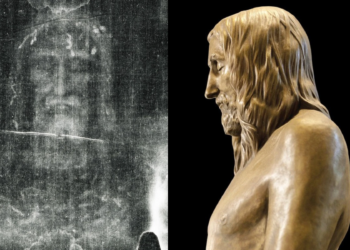Adrian Lee is a solicitor-advocate in London, specialising in criminal defence, and was twice a Conservative parliamentary candidate.
Nigel Farage’s Reform UK leads in the opinion polls and widens its margin of distance from the other parties each month.
That latest YouGov poll, undertaken between 31st of August and 1st of September, ranks the main political parties as follows: Reform 29 per cent, Labour 20 per cent, Conservatives 17 per cent, Liberal Democrats 15 per cent and Greens 10 per cent. A few days earlier, a polling company called Find Out Now published a poll conducted on 27th of August, which produced these results: Reform 34 per cent, Labour 18 per cent, Conservatives 15 per cent, Liberal Democrats 13 per cent and Greens 10 per cent. Conducted at roughly the same time as the Find Out Now poll (26th-28th August) was B.M.G.’s latest effort. This found the current state of the parties as being Reform 35 per cent, Labour 20 per cent, Conservatives 17 per cent, Liberal Democrats 13 per cent and Greens 7 per cent.
Reform has consistently led in all the opinion polls for the past eight months (the first being YouGov’s poll on 3rd of February). One weird result can be dismissed as a rogue poll, even one month of similar results can be written off as a seasonal fluke, but not all polls for over half a year. Isn’t it time we asked ourselves why Nigel Farage’s “start-up” party appears to attract around double the support of the Conservative Party? Is it all down to immigration or the matey banter of their leader, or are there other long-term reasons for the Conservatives’ decline?
On 2nd of July, YouGov conducted a poll of Conservative/Reform voters. They specifically examined voters who had abandoned the Conservatives since July 2024. They discovered that 26 per cent of Conservative voters at the 2024 General Election had since defected to Reform UK, 83 per cent of whom tended to be over the age of fifty.
However, before Conservatives take too much comfort from this statistic, YouGov also found that 75 per cent of Conservative Party loyalists fell into the same age category. Perhaps unsurprisingly, the greatest issue of political priority for the defectors was immigration (88 per cent put it as their number one concern), but then those who have remained with the Conservative Party don’t greatly differ (64 per cent place immigration in the top slot). Interestingly, 67 per cent of defectors to Reform say that they would consider returning to the Conservatives at the next General Election. More worryingly, 32 per cent of the current Conservative voter base say that they would consider switching to Reform next time around. Meanwhile, 5 per cent said that their only reason for sticking with the Conservatives is that they are not convinced that Reform could win.
One of the YouGov poll’s most concerning discoveries was that 11 per cent of defectors to Reform said that the main reason for departing was that they considered today’s Conservative Party too left-wing and liberal for their tastes.
Why should this be of concern?
Partly because it is very similar to the reason given by former Ulster Unionist Party (U.U.P.) voters for defecting to the Democratic Unionist Party in Northern Ireland in 2005. At the General Election of that year, after over a century of dominance in the province, the Ulster Unionist Party was replaced in Parliament by their Paisleyite rival. In subsequent elections, the U.U.P. went on to lose much of its representation in both regional and local government. They never returned to prominence again. Whilst it is accepted that this collapse was mainly due to the Good Friday Agreement rather than philosophical differences, it still had the effect of taking away the core “heartland” vote, without which political parties cannot hope to succeed. All political parties need to widen their base of support, but they cease to exist without a dedicated core.
Contrary to popular belief, the prevailing ideological influence on the Conservative Party since 2005 has been “One-Nation” Conservatism. Born out of the defeats of 1997, 2001 and 2005, the One-Nation revivalists (some referring to themselves as “Red Tories”) believed that voters had signalled their preference for the social democratic consensus and if the Conservatives stood a realistic chance of returning to government, they should compromise. Starting with the election of David Cameron as Leader in Autumn 2005, Central Office began signalling to the media that they were “modernising” the Party. In reality, the campaigning structure and the hierarchy remained completely unreformed and lagging decades behind that of the Liberal Democrats. The only thing that significantly changed was that the Party shifted to the Left on many policy issues.
Not only was there the “hug a hoodie” debacle in July 2006 and Cameron’s earlier visit to the Artic to raise awareness of climate change, there was also Greg Clark’s notorious comment that Conservatives should aim to be a little less like Winston Churchill and a little more like Guardian columnist Polly Toynbee. Clark’s comment should not have come as any great surprise, as both he and Polly Toynbee had been members of the S.D.P. back in the 1980s, but it clearly indicated the direction of travel. Perhaps the most significant of these political surrenders came in September 2007, when Cameron unveiled his “Medium-Term Expenditure Strategy” (M.T.E.S.). Out went the Conservative commitment to £21 billion in tax cuts and in came a commitment to match Labour’s public spending totals for the first three years of a Conservative government.
To enforce the U-turns, traditional Conservatives faced obstruction getting selected for Parliament and a new generation of females and minorities were positively promoted. The irony of this move was only appreciated later, when many new incomers tended to hold more stridently Conservative opinions than the leadership could have imagine at the time of their selection.
Despite these developments, Cameron faced a problem.
Up to the 2000s, disenchanted right-wing Conservatives had no other party to vote for. They either gritted their teeth and voted for Conservative candidates as the least bad option, or they stayed at home and abstained. Abstentions certainly saw off Edward Heath’s government in February 1974, but his slight margin of defeat illustrated that the disenchanted element had few protest options.
By 2005, and with the rise of U.K.I.P., this was starting to change.
At the 2010 General Election, U.K.I.P. secured 3.1 per cent of the vote and the Conservatives, although comfortably leading Labour by over 2 million votes, failed to win a majority. The subsequent pact with the Liberal Democrats ensured that the new government’s direction would be essentially centrist.
That trend was followed by Theresa May for most of her three years in office. Her successor, Boris Johnson, was not your typical “wet”, but he referred to himself as a “Brexity Hezza” for his devotion to high public expenditure and laxed immigration controls.
Tragically, by July 2024 public debt, taxation levels and immigrant numbers entering the country were at their highest in decades. Conservative voters were justified in thinking that they had not voted for us to get these results.
The origins of the One-Nation approach are said to date back to Disraeli, and mainstream opinion argues that it originates in the pages of his novel Sybil. There is a problem with this analysis, namely that Disraeli, whilst he wrote of “two nations” existing in nineteenth century society – the rich and the poor, never actually coined the phrase “One-Nation”. It is now increasingly accepted that the term was first adopted by Stanley Baldwin in a bid to win over Liberal voters in the inter-war years.
As a tactic, this was largely successful.
After the 1945 landslide defeat, the Conservatives convinced themselves that they could only return to government if they pledged to maintain Labour’s welfare state. So, One-Nation was trotted out once again. However, this was not just a convenient slogan masking Conservative measures, increasingly the Party establishment thought that we should govern from the Centre-Left and that we could manage socialism better than the incompetents in the Labour Party.
This strategy’s main flaw was that socialism simply did not work as a practical approach to government.
Nonetheless, the One-Nation obsession continued until the election of Margaret Thatcher as Party Leader in 1975.
Conservatives are now paying the price for not delivering on their promises.
Few can have forgotten about the commitment made to great fanfare at the 2007 Party Conference to scrap Inheritance Tax, which was quietly dropped when we returned to government. The same policy was trotted out again some years later, but once again the pledge amounted to nothing.
As Kemi Badenoch observed, Conservative voters are sick of voting for a party that “talks Right, but governs Left”.
In order, to get our voters back from Reform we should lay out a reasoned and comprehensive manifesto of distinctly Conservative policies, and we need to start doing this in the Autumn.
Time is running out.





![ICE Arrests Illegal Alien Influencer During Her Livestream in Los Angeles: ‘You Bet We Did’ [WATCH]](https://www.right2024.com/wp-content/uploads/2025/08/ICE-Arrests-Illegal-Alien-Influencer-During-Her-Livestream-in-Los-350x250.jpg)
![Gavin Newsom Threatens to 'Punch These Sons of B*thces in the Mouth' [WATCH]](https://www.right2024.com/wp-content/uploads/2025/08/Gavin-Newsom-Threatens-to-Punch-These-Sons-of-Bthces-in-350x250.jpg)
![Black BET Billionaire Donor Stuns Democrats, Gives $500K to Winsome Earle-Sears [WATCH]](https://www.right2024.com/wp-content/uploads/2025/08/Black-BET-Billionaire-Donor-Stuns-Democrats-Gives-500K-to-Winsome-350x250.jpg)







